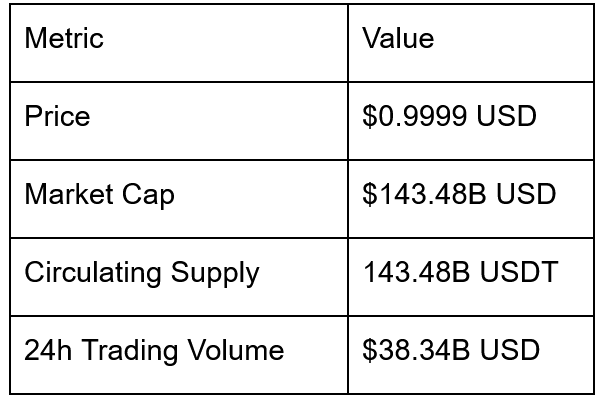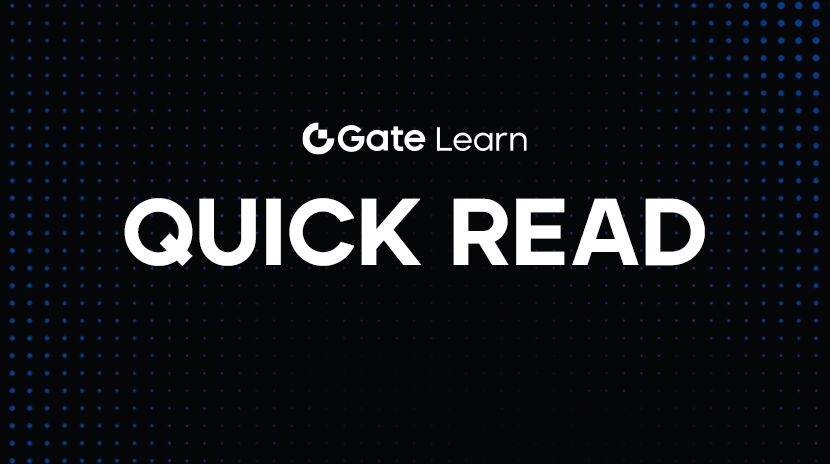USDT Meaning: Phân tích Sâu về Định Nghĩa và Triển Vọng Tương Lai của Đồng Tiền Ổn Định
1. Dự án USDT Lịch sử
Tether được thành lập vào năm 2014, ban đầu được biết đến với tên gọi Realcoin, và sau này được đổi tên thành Tether, do Craig Sellars, Reeve Collins và Brock Pierce thành lập. Ý định ban đầu của Tether là tạo ra một loại tiền điện tử được gắn liền với tiền tệ fiat nhằm giảm thiểu sự biến động của thị trường tiền điện tử.
Năm 2014, Tether đã ra mắt stablecoin đầu tiên USDT, được phát hành trên lớp Omni dựa trên Bitcoin. Ban đầu, USDT được phát hành thông qua sàn giao dịch Bitfinex, là công ty con của Tether. Theo thời gian, USDT dần chuyển sang các nền tảng blockchain khác như Ethereum, Tron và Algorand để cải thiện tốc độ giao dịch và giảm chi phí. Đến năm 2025, USDT hoạt động mạnh nhất trên Tron và Ethereum.
Tether khẳng định rằng mỗi USDT được hỗ trợ bằng một lượng tương đương với đô la Mỹ hoặc các tài sản khác để đảm bảo tính ổn định của nó. Công ty thường xuyên công bố báo cáo dự trữ để chứng minh tính xác thực và minh bạch của các tài sản của mình. Tuy nhiên, Tether đã đối mặt với tranh cãi và sự giám sát của cơ quan quản lý, đặc biệt là trong quá trình điều tra năm 2019 của Văn phòng Luật sư Tổng thị trưởng New York, nơi nó bị buộc tội thiếu minh bạch và tiềm ẩn hành vi không đúng. Tuy nhiên, Tether đã từ từ khôi phục lòng tin của thị trường bằng cách cải thiện cơ chế báo cáo và kiểm toán của mình.
2. Nguyên tắc kỹ thuật USDT
USDT, như một stablecoin, nguyên lý kỹ thuật chính của nó chủ yếu bao gồm các khía cạnh sau:
- Cơ chế giữ neo: Giá trị của USDT được duy trì ổn định bằng cách giữ nó với đô la Mỹ ở tỷ lệ 1:1. Tether tuyên bố rằng đối với mỗi USDT được phát hành, một lượng tương đương đô la Mỹ hoặc tài sản khác có giá trị bằng nhau (như trái phiếu chính phủ ngắn hạn, tương đương tiền mặt) được giữ trong tài khoản ngân hàng.
- Các nền tảng Blockchain: USDT ban đầu được phát hành trên lớp Omni của Bitcoin và sau đó được di dời sang các nền tảng như Ethereum, Tron và Algorand. Các nền tảng khác nhau cung cấp các lợi ích khác nhau, như việc hỗ trợ hợp đồng thông minh trên Ethereum và khả năng xử lý cao trên Tron.
- Phát hành và chuỗi rút: Người dùng có thể chuyển đổi đô la Mỹ thành USDT thông qua công ty Tether hoặc đối tác (như các sàn giao dịch), và ngược lại. Cơ chế này đảm bảo tính thanh khoản và ổn định giá trị của USDT.
- Sự minh bạch và Kiểm toán: Tether thường xuyên công bố báo cáo dự trữ được kiểm toán bởi các công ty kiểm toán bên thứ ba như BDO để chứng minh tính xác thực và đủ để đảm bảo tài sản của mình. Đến năm 2025, các báo cáo dự trữ của Tether đã trở thành tiêu chuẩn ngành công nghiệp, chứng tỏ cam kết với sự minh bạch của mình.
3. Kinh tế Token USDT
Mô hình tokenomics của USDT khá đơn giản, nhưng vẫn bao gồm những điểm chính sau:
- Tổng phát hành
Tether phát hành USDT dựa trên nhu cầu thị trường và sự có sẵn của tài sản dự trữ, mà không có giới hạn tối đa cố định. Nói cách khác, khi nhu cầu trên thị trường tiền điện tử tăng, Tether có thể tăng hoặc đổi USDT để duy trì tỷ lệ cố định 1:1 với đô la Mỹ và các đồng tương đương khác. - Tài sản dự trữ
Theo Bằng chứng Q4 2024 được phát hành bởi Tether, tổng tài sản dự trữ của Tether là khoảng 143 tỷ USD, với hơn 79% là trái phiếu Trésor Mỹ. Các tài sản dự trữ này cũng bao gồm các trái phiếu chính phủ khác, tiền mặt và tương đương tiền mặt, và các tài sản an toàn khác. Tether đạt được lợi nhuận ròng khoảng 13 tỷ USD vào năm 2024 và đạt mức cao lịch sử trong việc nắm giữ trái phiếu Trésor Mỹ. Các quan chức của Tether tuyên bố rằng kích thước dự trữ đủ để hỗ trợ số lượng USDT được phát hành, và sẽ thường xuyên chứng minh tính xác thực và tính thanh khoản của tài sản dự trữ thông qua các báo cáo kiểm toán hoặc bằng chứng. - Cấu trúc phí
Phí giao dịch cho USDT thay đổi trên các chuỗi khối khác nhau, với các mạng phát hành phổ biến bao gồm Ethereum, Tron, và như vậy. Nhìn chung, phí giao dịch cho USDT khá thấp, làm cho nó phù hợp cho việc giao dịch thường xuyên hoặc chuyển tiền qua biên giới. Đồng thời, các sàn giao dịch (như Gate.com) có thể tính một số phí cho việc nạp tiền, rút tiền và giao dịch USDT, tuân thủ theo các chính sách cụ thể của nền tảng. - Mô hình quản trị
Tether được quản lý bởi nhóm sáng lập và các nhà đầu tư lớn, mà không cung cấp cơ chế quản trị cổ đông token công cộng. Công ty sẽ cung cấp sự minh bạch cho cộng đồng và cơ quan quản lý thông qua các thông báo chính thức, chứng minh dự trữ, kiểm toán định kỳ, v.v., nhưng quyền quyết định và hướng điều hành chủ yếu được kiểm soát bên trong bởi Tether.
Bảng dưới đây tóm tắt cấu trúc của tài sản dự trữ của Tether dựa trên thông tin công khai (dữ liệu tính đến ngày 31 tháng 12 năm 2024, số liệu thực tế có thể được điều chỉnh):


Nguồn:Tether Q4 2024 Attestation
Nhìn chung, USDT dựa vào một nguồn tài sản dự trữ lớn và một cơ chế linh hoạt cho việc phát hành và chuộc lại để duy trì sự ổn định giá trị, và tăng cường niềm tin của thị trường bằng cách liên tục củng cố quy trình tuân thủ và kiểm toán. Đến ngày 24 tháng 3 năm 2025, dữ liệu thị trường tiếp tục cho thấy việc lưu thông và khối lượng giao dịch của USDT tiếp tục tăng, củng cố vị thế dẫn đầu của Tether trong cuộc đua stablecoin.
4. Phân Tích Thị Trường USDT
Đến ngày 24 tháng 3 năm 2025, giá trị thị trường của USDT là khoảng 14.348 tỷ USD, xếp thứ ba trong số tất cả các loại tiền điện tử. Là stablecoin lớn nhất theo vốn hóa thị trường, quy mô lưu thông và khối lượng giao dịch của USDT vẫn dẫn đầu so với các stablecoin khác (như USDC, BUSD, vv.), đóng vai trò quan trọng như một trụ cột giá trị trong thị trường tiền điện tử. Với đặc điểm được giữ cố định 1:1 so với đô la Mỹ, USDT thường được sử dụng để bảo vệ khỏi rủi ro biến động cao của tài sản tiền điện tử, biến nó trở thành một trong những phương tiện định giá và giao dịch phổ biến nhất trên các sàn giao dịch lớn (bao gồm cả Gate.com).
Bảng dưới đây hiển thị dữ liệu thị trường chính của USDT (tính đến ngày 24 tháng 3 năm 2025):


Nguồn:CoinMarketCap
Từ bảng này, có thể thấy rằng giá của USDT thường xung quanh $1.00 USD, phản ánh đặc điểm cốt lõi của nó như một stablecoin. Tuy nhiên, trong điều kiện thị trường cực đoan, USDT cũng có thể chệch khỏi tỷ lệ 1:1 một cách nhẹ nhàng. Theo dự đoán của mô hình AI hiện tại, giá của USDT có khả năng sẽ duy trì xung quanh $1.00 với những biến động nhỏ. Giá trị lớn nhất của nó đối với các nhà đầu tư nằm ở việc cung cấp một lựa chọn tiền tệ fiat ổn định cho giao dịch và chuyển đổi tài sản, đồng thời giảm thiểu các rủi ro thị trường liên quan đến biến động giá cả cao của tiền điện tử.
Đáng lưu ý rằng, theo dữ liệu lịch sử, giá cao nhất lịch sử của USDT đạt khoảng $1.22 vào ngày 25 tháng 2 năm 2015, và giá thấp nhất giảm xuống khoảng $0.5683 vào ngày 1 tháng 3 năm 2015. Hiện nay, với sự cải thiện liên tục của cơ chế chứng minh và cơ chế kiểm toán dự trữ, USDT đã có được sự uy tín cao trong việc đảm bảo ổn định giá trị và tính thanh khoản, và do đó đóng vai trò không thể thiếu trong hệ sinh thái tiền điện tử.
5. Tin tức gần đây về USDT và Động lực thị trường
- Vào đầu năm 2025, Tether đã phát hành các tài liệu chứng minh cho quý IV năm 2024, cho thấy lợi nhuận ròng là 13 tỷ đô la cho năm 2024, cao nhất trong lịch sử. Đồng thời, Tether nắm giữ trái phiếu Trésor Mỹ đạt mức cao kỷ lục là 113 tỷ đô la, làm chắc chắn vị thế của mình là nhà phát hành stablecoin lớn nhất thế giới.
- Vào ngày 7 tháng 3, Tether thông báo rằng họ đã hỗ trợ Cơ quan An ninh Liên bang Mỹ trong việc đóng băng 23 triệu USD của các quỹ bất hợp pháp liên quan đến sàn giao dịch bị trừng phạt Garantex. Điều này chứng tỏ vai trò chủ động của Tether trong việc chống lại tội phạm tài chính.
- Vào ngày 3 tháng 3, Tether đã bổ nhiệm Simon McWilliams làm Tổng Giám Đốc Tài Chính, đánh dấu bước tiến mạnh mẽ hơn trong quản lý tài chính và kiểm toán của công ty.
Những phát triển mới nhất này cho thấy rằng Tether không chỉ đạt được sự phát triển đáng kể về quy mô kinh doanh mà còn đạt được tiến bộ quan trọng trong việc tuân thủ và minh bạch.

Nguồn:tin tức tether
6. Tóm tắt USDT
Là một trong những người tiên phong trong lĩnh vực stablecoin, USDT đã đóng vai trò quan trọng trong thị trường tiền điện tử kể từ khi ra đời vào năm 2014. Đặc điểm lớn nhất của USDT là việc giữ giá 1:1 so với đô la Mỹ, mang lại sự tiện lợi cho các nhà đầu tư và doanh nghiệp để chống lại biến động giá, cũng như hỗ trợ thanh khoản linh hoạt cho các giao dịch xuyên biên giới và hệ sinh thái DeFi. Theo thời gian, Tether từng bước củng cố sự đáng tin cậy của tài sản dự trữ thông qua nhiều cải tiến và báo cáo minh bạch, cũng như hợp tác với các công ty kiểm toán để chứng minh tính đủ đáp ứng và tính xác thực của tài sản của mình.
Tuy nhiên, bản thân thị trường stablecoin vẫn phải đối mặt với áp lực kép về quy định và cạnh tranh. Các cơ quan quản lý tài chính trên toàn thế giới đã liên tiếp đưa ra các quy định mới để đặt ra các ngưỡng đầu vào và tuân thủ nghiêm ngặt hơn đối với tiền điện tử và stablecoin. Mặc dù USDT đang đạt được các kịch bản ứng dụng rộng rãi hơn, nhưng nó cũng cần liên tục cải thiện các khía cạnh thể chế và công nghệ của mình để đảm bảo tuân thủ các yêu cầu quy định và giành được sự tin tưởng của công chúng.
Nhìn vào tương lai, các cuộc thảo luận xoay quanh ý nghĩa của USDT sẽ đào sâu hơn vào các ứng dụng tiềm năng của nó trong thanh toán toàn cầu, lưu trữ giá trị và DeFi. Với giá trị thị trường đáng kể và việc sử dụng rộng rãi, dự kiến USDT sẽ tiếp tục củng cố vị trí dẫn đầu của mình trên thị trường stablecoin và trở thành một cầu nối quan trọng liên kết tài chính truyền thống với thế giới blockchain. Miễn là Tether tiếp tục đầu tư vào sự minh bạch, kiểm toán và tuân thủ, tác động của thị trường và triển vọng phát triển bền vững của USDT sẽ tiếp tục mở rộng, cung cấp một sự hỗ trợ ổn định và an toàn hơn cho toàn bộ hệ sinh thái tiền điện tử.
Bài viết liên quan

Hướng dẫn Xác minh KYC Pi Coin: Làm thế nào để vượt qua nhanh chóng

Dự đoán giá Solana năm 2025: SOL có thể đi lên cao đến đâu?

Hiểu về đồng tiền Baby Doge trong một bài viết

Những diễn biến mới nhất của Cardano (ADA)

Giá trị PI Crypto: Ra mắt Mạng chính vào ngày 20 tháng 2 năm 2025 & Dự đoán giá trong tương lai


